Have we lived long enough?
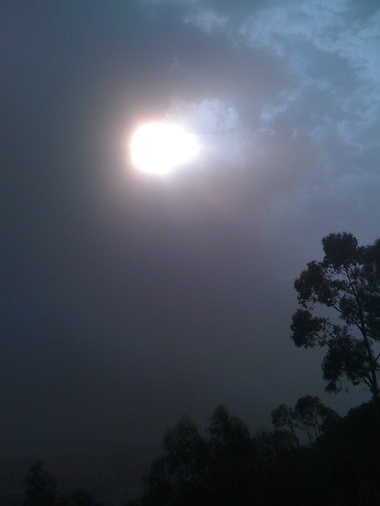
Three years ago today, I witnessed first-hand, the unrelenting and profoundly destructive force of the fires that created Australia’s worst natural disaster in recorded history.
The fires that began on February 7th 2009 “Black Saturday” took many lives, destroyed many homes and buildings and most certainly altered the psyche of many that I know, including me.
1000 plus degrees is not something that I have yet to really comprehend.
It is beyond human comprehension and perception, at least in my mind.
My family’s home, my children’s possession’s, their pet dog, were all “lost” in the fires. “Lost” is a strange adjective to use, but it seems less dramatic than evaporate. I thought only liquid evaporated…
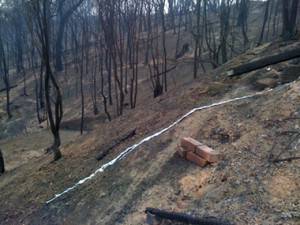
Being caught in an inferno is something that I still contend with most days. We all move on, perhaps in different directions and certainly with altered purpose, yet I often ponder the obscene luck of some [myself] and sadly the lack of the same obscene luck that mean’t others perished.
A few weeks after the fires in 2009, Professor Tom Griffiths [from the ANU] wrote an article titled ” We still have not lived long enough”. This really struck a chord with me. In this piece, he postulated…do we learn from history?
Professor Griffiths wrote of the 1939 “Black Friday” fires and the Royal Commission of Judge Leonard Stretton. The judge used the phrase “they had not lived long enough”, describing the horrible collision between an ancient natural cycle [bushfires] and relatively new european immigrants coming to grips with these events. These were events that my parents were alive to see. I am aware of many older people who still talk about the “fires of ’39”. I know myself that the 1983 fires -“Ash Wednesday” are discussed in a similar vein.
My father was born amongst the Red Gums, an association that my family has had for about 150 years. Even after recovering a few months after the events of February 2009, I spoke with an older [and much wiser] family member who had lived most of his life [and most of the 20th century] in the southern Riverina bush of New South Wales, amongst the red gums. His wise words on first greeting me were both full of caring accusation and somewhat incredulous..
“What ? Didn’t you see it coming?” .
I stopped and thought for a moment, then realised, the answer was yes, I did. That surprised me…
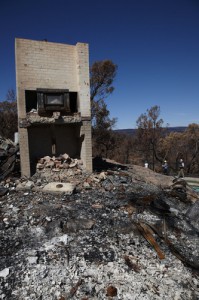
Professor Griffiths too, asked the simple yet profound question, do we learn from history? He answered his own question, suggesting the evidence suggested that we do not….
Those reading this that know what happened in Marysville during the fires, will shudder to read an excerpt from the 1939 Royal Commission..
“[Question:] Could anything be done to make Marysville safe against fire from the west?
[Answer:] — No. On Sunday night we were burning and all day Monday I had a big body of men on the western end of the township cutting and burning breaks. On Monday the fire jumped over everything we had done.”
The work of Museum Victoria’s Bushfire Collection, amongst many others, may help to correct earlier lapses of our collective memory. More support for such endeavours is certainly needed.
Three years [or seventy years] on, I think individuals and communities have learned much, yet I also fear that collectively we have allowed the opportunity for generational [cultural] change, to fade a little too quickly…The very same challenge that Professor Griffith’s suggests occurred to those who experienced the 1939 fires may be occurring today.
We most certainly cared for the survivors and victims of the 2009 fires far better and more deeply than perhaps at any other time in our history. That may still not be enough? Having been a recipient of such overwhelming concern and support, provided often by strangers, assures me that Australian’s have definitely learnt much. It was what we do from this point on that will be the test of Professor Griffith’s thesis.
We began building a new home in the last month, three years after the event. Time, energy, emotions, life, work, regulation, bureaucracy, family – all must be catered for during what is euphemistically called the recovery period.
Many still are effectively living as environmental refugees. Unable to return, not willing
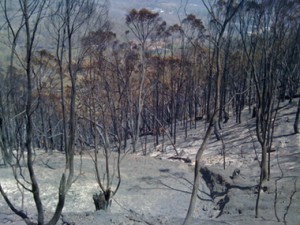
or simply prevented from returning to where they lived, parts of our landscape being assessed as no longer viable given the potential for such disaster. I have travelled widely, the Australian bush is where I choose to live. The reality of the environmental and population changes occurring over time present challenges anew for us all.
The larger scale opportunities for cultural change, planning, environmental, economic and social policy [unique to this corner of Australia] that comes with co-ordinated community and government action, at all levels, remains to be seen.
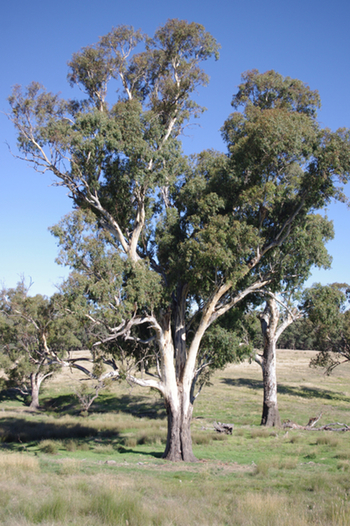
We still seem to struggle with the “big-picture” opportunities and the genuine leadership required to unite communities and the nation.
Energy infrastructure, telecommunications, building codes, social planning, at least to my eye, have not been coordinated or integrated in ways that I thought may have been possible in the weeks and months after the fires.
The cultural response is our greatest challenge.
Let’s hope we have lived long enough this time.
Links.
- “It really happened”
- ABC Online – Black Saturday
- We have still not lived long enough – Prof. Tom Griffiths
- 1939 Royal Commission
- 1983 – Ash Wednesday Fires
- 2009 Royal Commission
- Centre for Environmental History – Prof. Tom Griffiths
- Victorian Bushfire Research Project
- Museum Victoria Bushfire Collection
- Bushfire Class Action
- Bushfire Buyback Scheme
- “Then the wind changed” – ABC Documentary – Screens 8:30pm today

